This is the story of how a talk radio pioneer (and his devoted fans) concocted a wildly preposterous hoax – and succeeded beyond their wildest dreams.
 To fully appreciate this tale, you must first understand Jean Shepherd, the satirical genius who was a masterful storyteller, helped create the talk radio format, and was a gifted writer who gave the world A Christmas Story, which eventually became a movie in 1983 (narrated by Shepherd himself) and grew into an annual holiday tradition.
To fully appreciate this tale, you must first understand Jean Shepherd, the satirical genius who was a masterful storyteller, helped create the talk radio format, and was a gifted writer who gave the world A Christmas Story, which eventually became a movie in 1983 (narrated by Shepherd himself) and grew into an annual holiday tradition.
Shep (that’s how he identified himself) had a melodic voice that begged you to stop whatever you were doing and listen. It was only natural that he drifted into a career in radio after serving in World War II, eventually reaching that pinnacle of broadcasting, WOR Radio in New York City, in 1955.
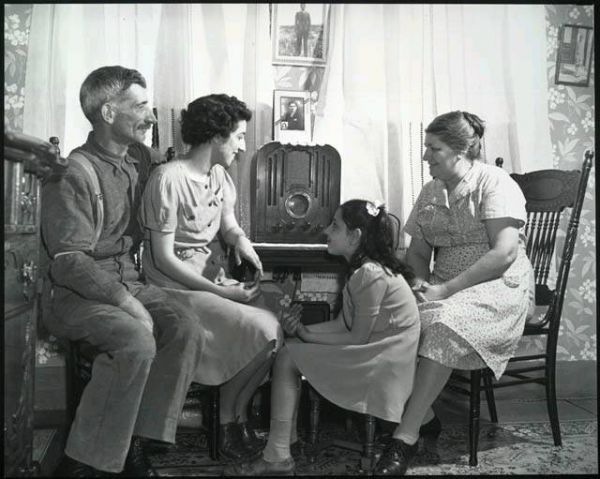 The industry was in a transition phase just then. Television’s arrival in the early 1950s had ended the Golden Age of Radio, and the older medium was struggling to reinvent itself. Music and news filled most of its day. Shep believed an engaging host could create an audience simply by talking directly to people, not reading from a prepared script. We now know the format as Talk Radio, but it was a cutting edge programming concept then.
The industry was in a transition phase just then. Television’s arrival in the early 1950s had ended the Golden Age of Radio, and the older medium was struggling to reinvent itself. Music and news filled most of its day. Shep believed an engaging host could create an audience simply by talking directly to people, not reading from a prepared script. We now know the format as Talk Radio, but it was a cutting edge programming concept then.
So he was given the time slot most broadcasters loathe above all others: the dreaded graveyard shift from midnight to dawn. But Shep loved it. The long stretch of empty hours meant he could ramble to his heart’s content. And with management safely snoozing in their beds, he could say whatever he wanted, too. His satiric brand of humor was ahead of the curve (he was satire when satire wasn’t cool) and quickly developed a fiercely loyal following among what he termed the Night People … including Beat poet Jack Kerouac and comedian Lenny Bruce. 
Shep may have been working in Manhattan, but having been born and raised in Hammond, Indiana (where A Christmas Story is set, by the way) he still had Midwestern sensibilities. One thing that astonished him about New Yorkers was (and still remains) their slavish obsession with Top 10 lists. “The 10 Most Beautiful People…” “The 10 New Looks for Summer…” “The 10 Hottest Movies…” Shep felt New Yorkers blindly followed whatever appeared on those lists without thinking or questioning them. The one that got his goat most of all was The New York Times Best Seller list for books.
 The Times has been printing this highly influential list since 1931. But here’s the thing: in Shep’s time, despite its name, the criteria for making the list involved more than just book sales. It included customer requests for and questions about books to book sellers. So if a retailer had a stack of a particular book that wasn’t selling, he could gin up enough queries about it to get the title included on the best seller list, which then made people go out and buy it.
The Times has been printing this highly influential list since 1931. But here’s the thing: in Shep’s time, despite its name, the criteria for making the list involved more than just book sales. It included customer requests for and questions about books to book sellers. So if a retailer had a stack of a particular book that wasn’t selling, he could gin up enough queries about it to get the title included on the best seller list, which then made people go out and buy it.
Shep saw through this hypocrisy and ranted about it at length one night. In a burst of inspiration, he speculated that if enough people requested the same title of a book that didn’t actually exist, it could indeed make the coveted New York Times Best Seller List. The Night People went crazy over the idea; WOR was flooded with calls from listeners pledging their support. 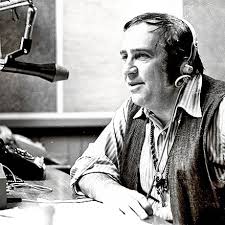
Shep was like a kid in a candy store. He invited the Night People to suggest a title for their “book.” After receiving dozens of suggestions, he settled on I, Libertine. His creative juices were flowing now, and Shep quickly created a fictitious author: a retired British military officer and scholar named Frederick R. Ewing who lived with his wife Marjorie on their English country estate, where he churned out a steady stream of literature on his manual typewriter.
And so, in the spring of 1956, the I, Libertine hoax was set in motion.
Remember, this was the time before Barnes & Noble, Books-A-Million and Amazon.com. Books were primarily sold by mom-and-pop book retailers. Hundreds, then soon thousands, of the Night People descended on these stores, asking with a straight face if I, Libertine was in stock and (because it obviously wasn’t), if it could be ordered. One listener reported a particularly snooty clerk responded to the query with, “Frederick R. Ewing? It’s about time people began noticing his work. I’ve long felt he hasn’t received the recognition he deserves.”
Another listener described how she mentioned the book at her weekly bridge club meeting; three women said they had read it, and then proceeded to argue over which chapters they liked and those they didn’t.
One Night Person who was a college student (Shep wouldn’t name the school, but strongly hinted it was Rutgers) submitted a lengthy term paper for an English Lit class on “F.R. Ewing: Eclectic Historian.” He even included extensive footnotes quoting from Ewing’s previous novels. The professor wrote “Superb research!” on the cover page and gave it a B+. The student later told Shep: “My whole education is probably phony.”
Because New York is an international city, Night People who were travelers took the hoax with them overseas. Requests for I, Libertine began popping up in London, Paris, Rome and Bonn, West Germany.
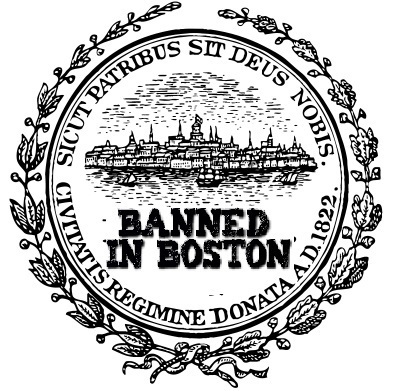 In perhaps the hoax’s crowning achievement, a church congregation in Massachusetts condemned I, Libertine, enabling proponents to claim with semi-accuracy that the book had been “banned in Boston.” Nothing, after all, drives sales faster than censorship.
In perhaps the hoax’s crowning achievement, a church congregation in Massachusetts condemned I, Libertine, enabling proponents to claim with semi-accuracy that the book had been “banned in Boston.” Nothing, after all, drives sales faster than censorship.
And sure enough, it happened: by early summer 1956, the book that didn’t exist made The New York Times Best Seller List … and kept inching upward on it. One literary gossip columnist even wrote in a leading newspaper, “Had a delightful lunch the other day with Frederick R. Ewing and his charming wife, Marjorie.”
And the whole time this was going on, Shep and his Night People listeners were laughing themselves silly. There was never any secret to it; it was a hoax openly discussed and pulled off right on the public airwaves.  One day that summer, Shep was having lunch with his friend, real-life science fiction novelist Theodore Sturgeon, and the publisher of Ballantine Books. Sturgeon casually asked, “Would you like to meet the author of I, Libertine?” The publisher excitedly looked around the room. “Would I? Every publishing house in New York would like to buy that title. Where is he?” Sturgeon pointed to Shep and said, “Right here.” They explained the gag and had a good laugh, then decided to actually produce a real book. So working from the plot outline Shep had given his listeners, Sturgeon cranked out a real story. It hit store shelves in September 1956, and guess what? You got it – I, Libertine made the Times Best Seller list (again).
One day that summer, Shep was having lunch with his friend, real-life science fiction novelist Theodore Sturgeon, and the publisher of Ballantine Books. Sturgeon casually asked, “Would you like to meet the author of I, Libertine?” The publisher excitedly looked around the room. “Would I? Every publishing house in New York would like to buy that title. Where is he?” Sturgeon pointed to Shep and said, “Right here.” They explained the gag and had a good laugh, then decided to actually produce a real book. So working from the plot outline Shep had given his listeners, Sturgeon cranked out a real story. It hit store shelves in September 1956, and guess what? You got it – I, Libertine made the Times Best Seller list (again). 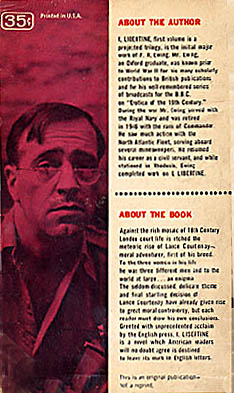
The cover artwork has a hilariously lurid painting featuring the ridiculous teaser line: “Gadzooks,’ quoth I, ‘but here’s a saucy bawd!'” A hint about the story’s true origin is hidden within it: an inn sign in the background features a shepherd’s staff. There’s even a black and white photo on the back cover of a forlorn looking Shep identified as Ewing. (In a totally classy move, Shep donated all profits from the real book to charity. His intention had never been to con people out of money; it was to expose human gullibility and to demonstrate how easily people can be manipulated by their blind desire to be part of the “in” crowd.)
Shortly before the real book was released, a loyal Night Person who also happened to be a reporter for The Wall Street Journal and had eagerly followed the hoax from Day One asked, “Don’t you think it’s time to spill the beans?” Shep agreed, and on August 1, 1956 the story appeared on the Journal’s front page. It was big news for a week, with the Journal’s story even appearing word for word in Pravda, the official newspaper of the Soviet Union.
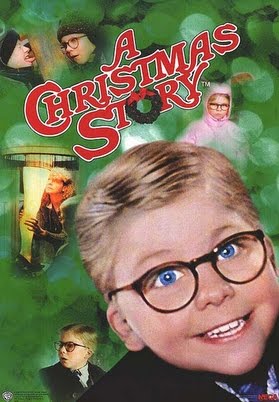 In time the matter was eventually forgotten. Shep, of course, went on to pen the tale for which he’s best remembered today, a story that has more to do with a certain BB gun than libertines.
In time the matter was eventually forgotten. Shep, of course, went on to pen the tale for which he’s best remembered today, a story that has more to do with a certain BB gun than libertines.
As for the moral of this story, the news media at the time completely missed the point. They reported the matter as a simple hoax, not a revealing expose on human nature. The I, Libertine experience proved what Shep had claimed all along: the vast majority of people simply don’t think for themselves.
 I checked, and you can still buy I, Libertine on Amazon.com. Not bad for something that started nearly 60 years ago on a whim during an overnight radio program.
I checked, and you can still buy I, Libertine on Amazon.com. Not bad for something that started nearly 60 years ago on a whim during an overnight radio program.
Did you find this enjoyable or helpful? Please continue to join me each week, and I invite you to read Tell it Like Tupper and share your review!
Curious about Tell It Like Tupper? Here’s a chance to see for yourself. Take a sneak peek at a couple chapters in this free downloadable excerpt.


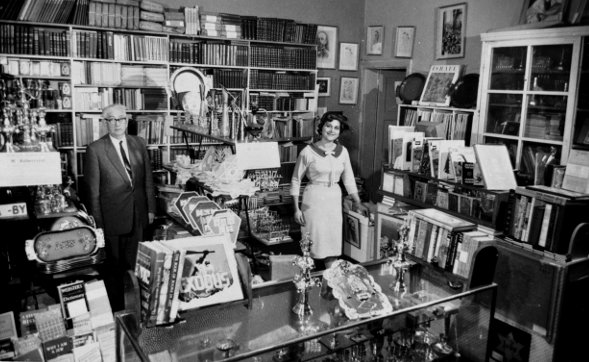
very interesting. I had never heard about the Book that never existed.
You learn something new every day, Carol. At least I do! Thanks for sharing your comment.
I was a big fan of Jean Shephard & John Nebel as well. I was definitely one of the night people. No one like them anymore. Didn’the know about this “scam” but love it!!
Thanks for reading & sharing your comment, Judy. I appreciate it.
Years later, Newsday columnist Mike McGrady decided to go out and write a terribad novel with zero literary redeeming quality other than a lot of sex. Each chapter is written by a different writer (either columnist or reporter), and they have to edit it to be bad. Naturally it made the best selling list.
Wasn’t that Naked Came the Stranger?
Yes,,,,
Pingback: Stealing Other People’s Homework: “Gadzooks? But Here’s a Saucy Bawd!” | MarzAat
One additional note: WOR was then, as it is today, a 50 kilowatt station, meaning that late at night, when Shep was on the air, the station’s signal reaches well beyond New York. Night People in as many as thirty-seven other states were in on the gag.
Sturgeon also wrote another fake book. He was the author of the “Kilgore Trout” book, Venus on the Halfshell, from Kurt Vonnegut’s novels.
No, Philip José Farmer wrote Venus as Trout.
Absolutely brilliant. I tip of the hat to the mater for engineering this hoax on the upper crust literary community.
Pingback: “I, Libertine”: The book that wasn’t, then was
Pingback: The Bestseller Book That Didn’t Exist | The Passive Voice | A Lawyer's Thoughts on Authors, Self-Publishing and Traditional Publishing
Pingback: Ginning the Bestseller Lists, Old-School - Women of Mystery
I’ve read Sturgeon’s *I, Libertine* and it really was quite good.
F.R. Ewing’s amazing writing has influenced me greatly. 😉
Fascinating article. The powers that be and media still think for most people, even now. Especially now. The key is to be aware of this.
Thanks for sharing.
I heard that *I Libertine* was really written by Ewing’s wife, Marjorie.